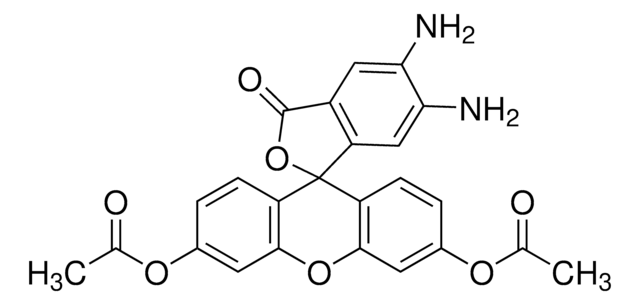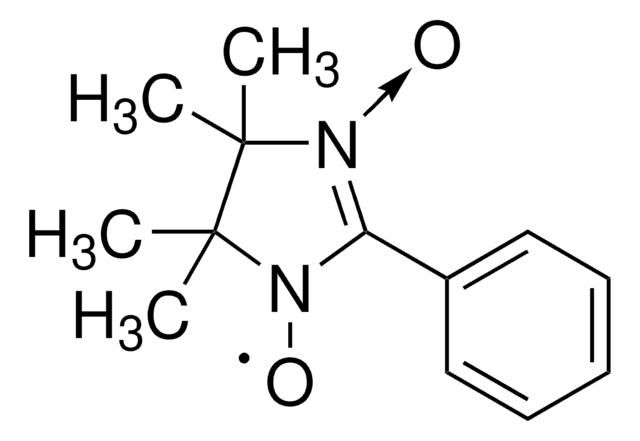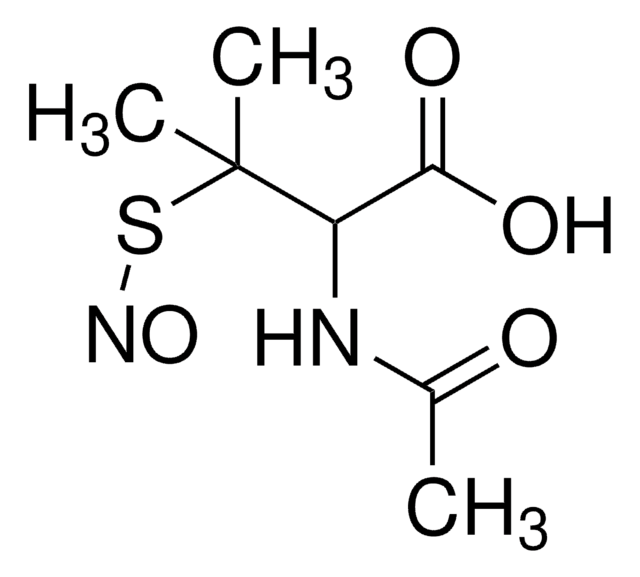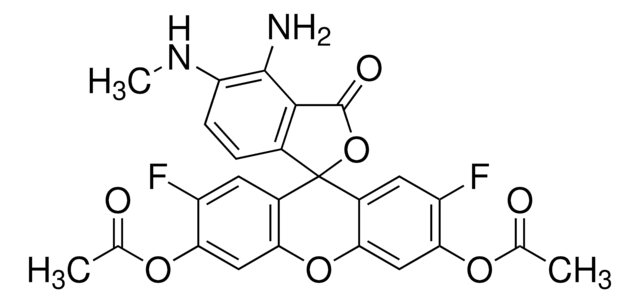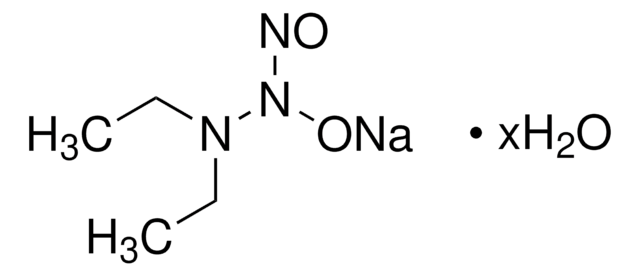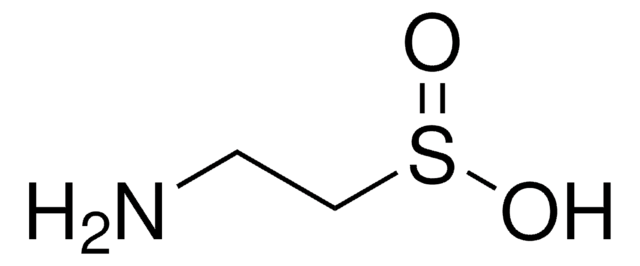C221
Carboxy-PTIO potassium salt
Synonym(s):
2-(4-Carboxyphenyl)-4,4,5,5-tetramethylimidazoline-1-oxyl-3-oxide potassium salt, 2-(4-Carboxyphenyl)-4,5-dihydro-4,4,5,5-tetramethyl-1H-imidazol-1-yloxy-3-oxide potassium salt
About This Item
Recommended Products
biological source
synthetic (organic)
Quality Level
Assay
≥98% (TLC)
form
powder
mp
>270 °C
solubility
H2O: 100 mg/mL
DMSO: soluble (lit.)(lit.)
methanol: soluble (lit.)(lit.)
storage temp.
2-8°C
SMILES string
[K+].CC1(C)N([O])C(c2ccc(cc2)C([O-])=O)=[N+]([O-])C1(C)C
InChI
1S/C14H17N2O4.K/c1-13(2)14(3,4)16(20)11(15(13)19)9-5-7-10(8-6-9)12(17)18;/h5-8H,1-4H3,(H,17,18);/q;+1/p-1
InChI key
VYEUQMVIGXFZQU-UHFFFAOYSA-M
Looking for similar products? Visit Product Comparison Guide
General description
Application
Biochem/physiol Actions
Storage Class Code
11 - Combustible Solids
WGK
WGK 3
Flash Point(F)
Not applicable
Flash Point(C)
Not applicable
Personal Protective Equipment
Choose from one of the most recent versions:
Already Own This Product?
Find documentation for the products that you have recently purchased in the Document Library.
Customers Also Viewed
Our team of scientists has experience in all areas of research including Life Science, Material Science, Chemical Synthesis, Chromatography, Analytical and many others.
Contact Technical Service